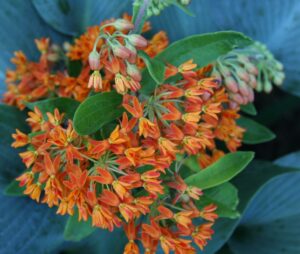 On Thursday, the International Union for the Conservation of Nature added the migratory monarch butterfly to the “red list” of threatened species.(1) One of the most recognizable butterflies in the world, the monarch butterfly (Danaus plexippus) is famous for its seasonal migration. Millions of monarchs migrate south from the United States and Canada to California and Mexico for the winter.(2)
On Thursday, the International Union for the Conservation of Nature added the migratory monarch butterfly to the “red list” of threatened species.(1) One of the most recognizable butterflies in the world, the monarch butterfly (Danaus plexippus) is famous for its seasonal migration. Millions of monarchs migrate south from the United States and Canada to California and Mexico for the winter.(2)
It has distinctive orange wings with black lines and white dots. Monarchs live an average of 6-8 months, weigh under 0.001 ounces, and have a medium wingspan of 3.9 inches. Their move to the endangered list means they are just two distinctions from extinction. The primary causes of their move to the red list are loss of habitat and climate change. Want to help the monarch population during this critical time?
The number one thing you can do is plant native milkweed and supplementary plants. There is a number of native milkweeds to choose from – visit UF|IFAS’s Milkweed Species Native to Florida for the complete list. However, there are milkweeds that are essential for monarch butterflies to be able to complete their life cycle within your garden. Female monarchs prefer to lay on swamp milkweed (Asclepias incarnata) and common milkweed (A. syriaca).(3)

Milkweed is crucial to the diet of monarchs; their distinctive coloring is not an invitation to be eaten but a warning to predators that they are poisonous. They have evolved to not only tolerate but use the toxicity naturally occurring in milkweed to protect themselves by storing it in the veins. Monarchs will feast on all milkweed varieties however, butterfly weed (A. tuberosa) is native to Florida, widely available, and has beautiful flowers.
Supplementary plants are plants of other species that should be planted around milkweed to assist in a healthy ecosystem. These are plants that should be chosen based on each individual location’s soil, sun, and water retention rates as well as hardiness zone. Please remember to always choose native plants to increase the health of your soil and the natural benefits of your garden.